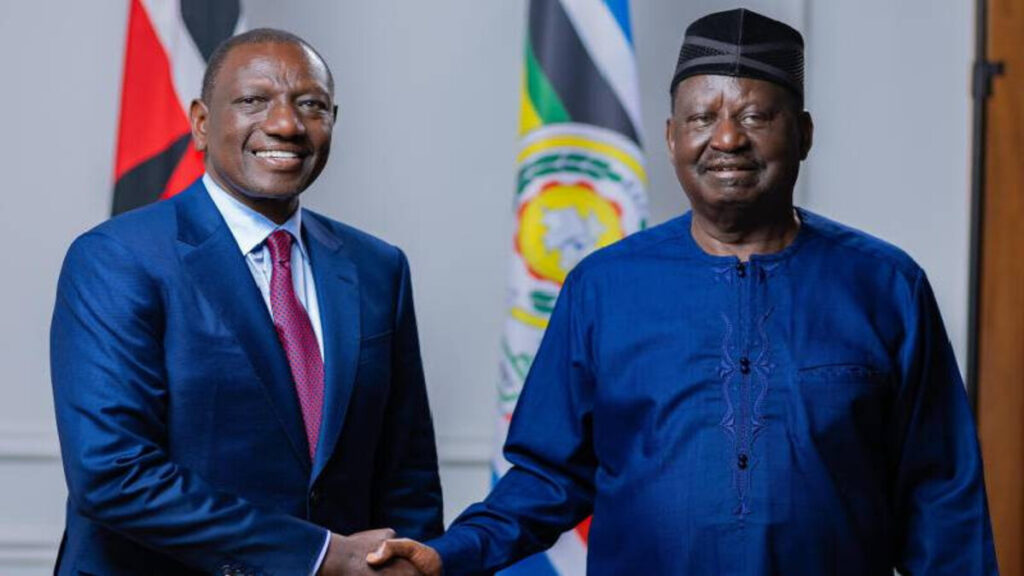
President William Ruto with opposition Leader Raila Odinga
President William Ruto has confirmed a merger between the government and opposition leader Raila Odinga’s faction ODM, debatably a significant political development in Kenya. This collaboration aims to strengthen governance and address national issues following recent protests. Ruto’s administration has incorporated several of Raila’s allies into the Cabinet, signalling a shift in political dynamics.
The merger poised to enhance Raila’s candidacy for the African Union Commission (AUC) chairmanship. Joint efforts are expected to mobilise support for his campaign ahead of the February 2025 elections. This development follows a series of protests that occassioned the need for a more unified approach to governance.
The confirmation of the merger was made by President Ruto during a press conference held at State House, Nairobi. He stated, “This merger is a step towards national unity and effective governance. We are committed to working together to address the pressing issues facing our nation.” The President’s remarks underscored the importance of collaboration in achieving national goals.
Raila Odinga, in a separate statement, expressed his support for the merger. He said, “This is a historic moment for Kenya. By joining forces, we can ensure that the voices of all Kenyans are heard and that our government works for the benefit of everyone.” Odinga’s comments highlighted the potential for positive change through this political alliance.
The merger has seen the inclusion of several of Raila’s allies in key government positions. This move is expected to bring a new dynamic to the Cabinet, with a focus on addressing the issues that have led to public discontent. Among those appointed are former opposition figures who have been vocal about the need for reforms in various sectors.
Political analysts have noted that this merger could significantly impact the upcoming AUC chairmanship elections. Raila’s candidacy is expected to gain momentum with the backing of the government. The joint efforts of Ruto and Raila’s factions are likely to mobilise substantial support for his campaign.
The merger has also been seen as a strategic move to stabilise the political landscape in Kenya. Recent protests had highlighted the divisions within the country, and this collaboration is viewed as a way to bridge those gaps. By working together, the government and opposition aim to create a more cohesive and effective administration.
However, the merger has not been without its critics. Some opposition members have expressed concerns about the potential for compromise on key issues. They argue that the merger could dilute the opposition’s ability to hold the government accountable. Despite these concerns, the overall response has been positive, with many seeing it as a necessary step towards national unity.
The merger is also expected to have implications for Kenya’s international relations. With Raila’s candidacy for the AUC chairmanship, the country is likely to play a more prominent role on the continental stage. The support of the government is expected to bolster his campaign and enhance Kenya’s influence within the African Union.
The coming months will be crucial as the government and opposition work together to implement their shared vision. The success of this merger will depend on their ability to address the pressing issues facing the nation and to maintain a united front in the face of challenges. As Kenya moves forward, the eyes of the nation will be on this historic collaboration and its impact on the country’s future.